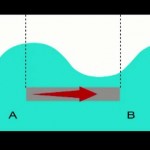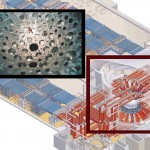[CLASSIFIED]
December 4, 2010
October 9, 2010
Foreclosure Halt demonstrates market self preservation
About a week ago, I heard about how Bank of America was halting their foreclosures in multiple states. Now it seems that they have stopped foreclosing in all 50 states. This is called a moratorium, and in this case it means that Bank of America is not going to foreclose on many Americans’ homes even if they are not able to pay their mortgages. At first glace it may seem like they are doing this because they are being nice. Or perhaps they aren’t foreclosing on people because they can get more money by keeping people in their homes and accepting partial payment. But what I think is really going on is that Bank of America is attempting to preserve the housing market by plugging the gaping hole of rapid foreclosures. The one thing that we know about foreclosures is that the bank makes more money on a mortgage then they do if they have to sell a home after a foreclosure. The reason for this is because every time there is a foreclosure the bank needs to sell the property quickly in order to make money. Having it sit on the market does nothing for them. But the problem for the banks is that when there is a foreclosure in a neighborhood, there is a high probability that the value of other homes in the area will lose value. If you compound this with how there is a tremendous amount of unemployment and joblessness, then one can see how families may have trouble paying their mortgages. When people can’t pay their mortgages, they usually go into foreclosure and have to find a different housing solution.
But since Bank of America is temporarily halting Foreclosures, they are putting a stop on a chain reaction. This is actually in their favor. Because even though Bank of America will lose money from not selling properties that are foreclosed upon, they will protect the value of their other properties. I wouldn’t be surprised if other banks started to but the breaks on their foreclosures as well. I think the banks know something about the way the market is going that isn’t clear to the rest of us. They can probably see that even though the economy may look like it is stabilizing, the reality is that our ideal rate of financial growth is not sustainable.
One thing to think about is that if the value of a home drops, then it is more difficult to get good deals on refinancing.
Bank of America must see that they have too much a stake in the housing market to allow a foreclosure chain reaction to take place. So they are invariably protecting their assets by being lenient towards homeowners.
But while this is happening I am wondering how long Bank of America can maintain this halt on foreclosures. Because it doesn’t seem very clear when jobs are going to become widely available that will enable people to pay their mortgages. Also with the government going to vote again on the unemployment bill extension in November, there is an interesting issue that arises: Is the market heading toward a serious course correction?
From the looks of it, the government will probably pass the Unemployment extension in November. So it seems like we are being allowed to continue with our lifestyles for purpose. I think that purpose is to maintain consumption habits. If people stop consuming then this entire system is going to have a lot bigger problems than house devaluation.
-Tyler
September 23, 2010
Wave Farms provide possible abundant source of sustainable energy
Wave farms are large sea-borne machines used to harness energy from the sea. Big thanks goes out to Mike P. for sharing the link on wave farms. You can check out the cool movie explaining wave farms by clicking on the picture to the left. Wave Farms are an interesting form of energy generation because there is almost a limitless amount of energy created by the oceans. The movement of the waves and the resulting changes in pressure causes there to be a directional shift in the movement of water. So if one was to have a large tube in the water equipped with a turbine based energy generator, one could harness a great deal of energy. The amount of energy that is available for extraction is dependent on the amount of turbines and tubes, size is also a factor. Wikipedia says that there is an estimated one Terrawatt (TW) to ten TW of available energy. But one thing that concerns me about accessing wave current energy on such a massive scale would be one questions: If we drained too much energy from the ocean, couldn’t we possibly disrupt wave patterns and possibly create weather issues? The articles I read never really touched on that issue. The only reason why, might be because we wouldn’t need nearly that much energy.
Another issue that I was wondering about regarding wave farms would be: How do you get the energy from the turbines to the cities? Would they use some long waterproof energy cord? I’m not 100% sure how that would work.
Although Wave Farms make more sense to be used in the oceans surrounding islands and peninsulas. Large countries with ocean access could use Wave Farms as part of a larger sustainable energy program. For example: If the United States used Wave Farms in conjunction with Solar Power, Wind Power and Geothermal Power, we could have a large portion of our energy needs met.
Another factor that hasn’t been discussed about wave farms is that, where there is water and energy, communities can exist. So it is possible for in the future for entire submerged communities living below the sea to utilize Wave Farms for their energy needs. Wave Power can be used for other things than just electricity generation. You can use Wave Power to power a Desalinization Plant. This would be an important part of having an underwater town or city.
Wave Farms use supposedly simple turbine systems to generate electricity. This is a good thing, because a complicated metal system with many moving parts would probably be more susceptible to rust, corrosion, and maintenance issues.
There would also need to be safety measures for fish, so that they don’t get caught in the turbines. But from what I watched in the video the turbines seem very harmless. It’s not like they are some kind of dangerous fan looking turbine. They look more like a series of revolving doors attacked to a central area.
Overall Wave Farms seem to be a technology that needs to be explored because it is one of the few methods of generating energy from ocean movement. If we take the time to harness ocean energy we may learn better methods to acquire energy from more traditional methods along the way.
-Tyler
SOURCES:
scivee.tv – “Wave Farm” Ocean Wave (Underwater) Power Generator – by Wavefarm – September 5th, 2010 – retrieved September 24th, 2010: http://www.scivee.tv/node/22758
Wikipedia – “Wave Power” – Retrieved September 24th, 2010: http://en.wikipedia.org/wiki/Wave_power
Wikipedia – “Wave Farm” – Retrieved September 24th, 2010: http://en.wikipedia.org/wiki/Wave_farm
September 15, 2010
Let us wish the National Ignition Facility good luck
Good luck and best wishes to all the hard working men and women at the National Ignition Facility! These brave and honorable people are working hard to make sustainable nuclear fusion possible. I am amazed that I haven’t heard of the National Ignition Facility before. It is a place where huge lasers are powered up and directed at a very small piece of valuable material. This material is called tritium. What is supposed to happen is that the lasers get so focused and powerful that they all hit the tritium at the same time. Then the tiny ball of tritium undergoes a number of processes including a powerful shockwave and becoming more dense. At a certain point the ball of fuel gets so hot and so dense that nuclear fusion takes place. This is very cool indeed because if this process becomes a success, then it will be possible to generate energy via a chain reaction. Thus more energy will be created than required to start the reaction. We are talking about a great deal of energy here. This is the same kind of process of energy generation that happens in a star.
This is a BIG process. The National Ignition Facility (NIF) is bigger than three football fields and is ten stories tall in certain areas. Some people think these kind of gigantic energy experiments and research are a waste of money and resources. But I completely disagree. We must try to harness this kind of power. Some of the lasers fire infra-red energy. But then when the laser beams hit the spherical chamber where the tritium is housed, the lasers turn blue.
Honestly, as a US Citizen, I don’t care how much this project costs. I just want them to do it. By even trying to hit such a high level of technology we are without a doubt learning a great deal of other important things. I read that the laser power generated by this facility is many times more powerful than any other laser on Earth. The intriguing thing about the NIF is that if successful, we could research into new branches of technology that require a tremendous amount of energy. One form of technology that is possible but extremely power dependent is levitation. We know how to do it, (well I don’t completely understand how but some scientists do) it just sucks up too much energy to make it happen. But if there was an over abundance of clean energy, that kind of technology could be made possible.
I really commend and respect any person who takes the time to work on impressive projects like the National Ignition Facility. The technology that could be developed as a result of this facility is on the level, of civilization changing stuff. This is the kind of advancement that I bet makes aliens that observe us in cloaked ships say, “Hmm. Looks like these humans are doing pretty well. Let’s continue watching and see if we can steal any ideas!”
-Tyler
SOURCES:
Wikipedia, “National Ignition Facility” retrieved Sept 15th, 2010: http://en.wikipedia.org/wiki/National_Ignition_Facility
Lawrence Livermore National Laboratory, “NIF”, retrieved Sept 15th, 2010: https://lasers.llnl.gov/


